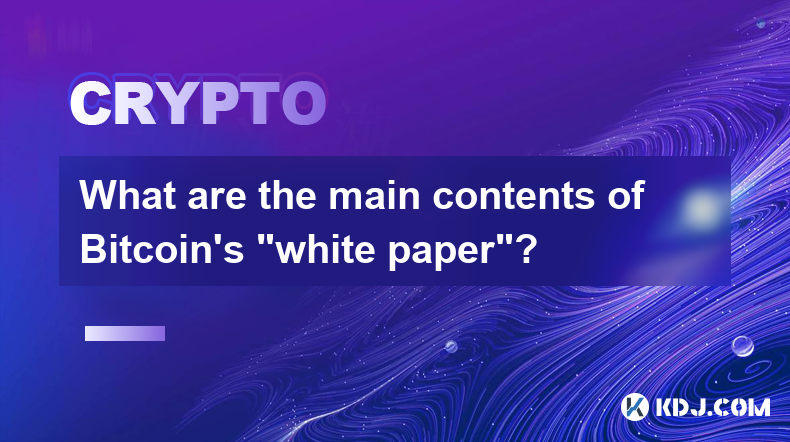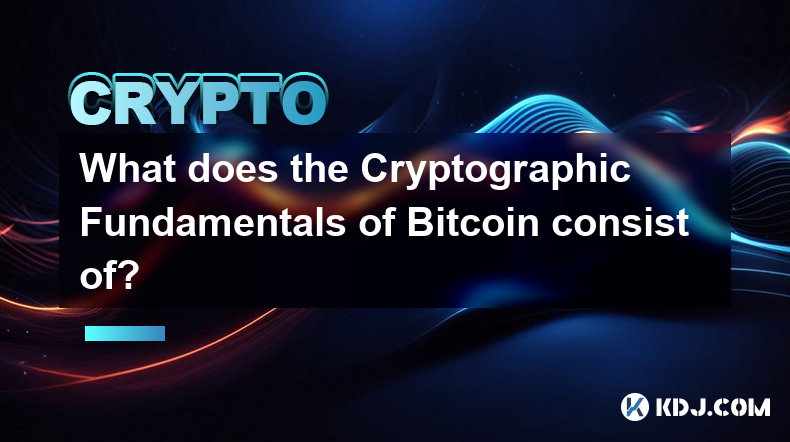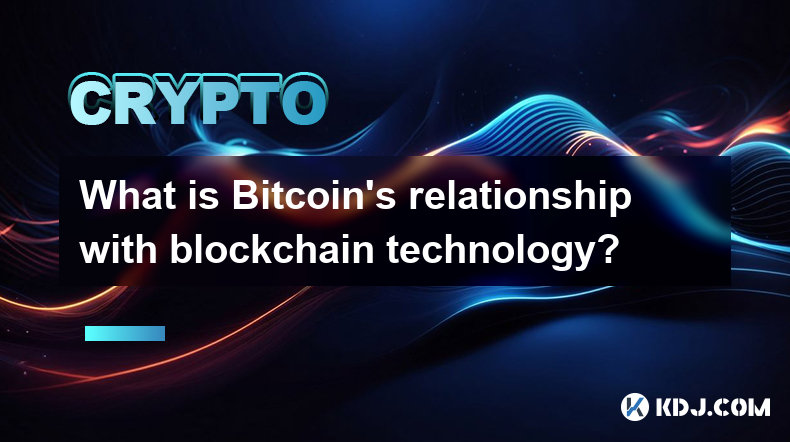-
 Bitcoin
Bitcoin $96,640.2391
-1.65% -
 Ethereum
Ethereum $2,774.9044
1.56% -
 XRP
XRP $2.5935
-0.94% -
 Tether USDt
Tether USDt $1.0000
-0.01% -
 BNB
BNB $661.2079
0.74% -
 Solana
Solana $173.1228
-0.78% -
 USDC
USDC $1.0000
0.02% -
 Dogecoin
Dogecoin $0.2460
-2.67% -
 Cardano
Cardano $0.7730
-3.13% -
 TRON
TRON $0.2359
-2.98% -
 Chainlink
Chainlink $17.8332
-2.31% -
 Avalanche
Avalanche $25.7255
1.25% -
 Sui
Sui $3.4300
-0.19% -
 Stellar
Stellar $0.3347
-0.39% -
 Litecoin
Litecoin $128.4555
-3.57% -
 Toncoin
Toncoin $3.6770
-0.21% -
 Shiba Inu
Shiba Inu $0.0...01556
-0.53% -
 Hedera
Hedera $0.2180
-0.53% -
 UNUS SED LEO
UNUS SED LEO $9.6924
-0.40% -
 Hyperliquid
Hyperliquid $24.6648
-2.80% -
 Polkadot
Polkadot $5.0984
-2.54% -
 MANTRA
MANTRA $7.5025
-0.29% -
 Bitcoin Cash
Bitcoin Cash $321.1194
-1.61% -
 Bitget Token
Bitget Token $4.9576
2.81% -
 Ethena USDe
Ethena USDe $0.9996
0.24% -
 Uniswap
Uniswap $8.9840
-2.46% -
 Dai
Dai $1.0001
0.03% -
 Monero
Monero $236.2089
0.29% -
 NEAR Protocol
NEAR Protocol $3.5181
0.81% -
 Pepe
Pepe $0.0...09660
0.25%
What is Ethereum's EIP?
Ethereum Improvement Proposals (EIPs) empower community members to propose and implement changes to the platform's protocol, fostering innovation while prioritizing backward compatibility.
Feb 19, 2025 at 01:54 am

Key Points
- Ethereum Improvement Proposal (EIP) is a formal proposal mechanism by which Ethereum users can suggest changes to the protocol.
- EIPs are categorized into several types based on their scope, impact, and maturity level.
- The EIP process involves multiple stages, including drafting, discussion, and implementation.
- A key aspect of EIPs is their focus on backward compatibility, ensuring the seamless evolution of the Ethereum ecosystem.
- Ethereum's EIP system plays a crucial role in driving innovation, enhancing performance, and mitigating security risks.
What is Ethereum's EIP?
Ethereum, the blockchain platform, employs a sophisticated mechanism known as Ethereum Improvement Proposal (EIP), which facilitates the organized and community-driven proposition and implementation of changes to the core protocol. EIPs serve as the backbone of the platform's iterative development, providing a standardized process for introducing new features, optimizing existing functionality, and addressing technical issues.
Types of EIPs
EIPs are categorized into various types to reflect their scope, impact, and level of maturity:
EIP Classifications
- Core EIPs: They propose alterations to the foundational principles and architecture of the Ethereum protocol.
- Standard EIPs: These EIPs focus on defining technical specifications, standards, and conventions within the Ethereum ecosystem.
- Meta EIPs: They provide a framework for the EIP process itself, outlining the mechanics of proposal submission, evaluation, and implementation.
- Informational EIPs: These EIPs document design choices, rationale, or implementation details without proposing specific changes to the protocol.
EIP Maturity Levels
- Draft: An EIP in its early stage of development, subject to revisions and modifications.
- Review: An EIP that has gained traction and is undergoing thorough analysis and feedback from the community.
- Final: An EIP that has reached consensus and is ready for implementation.
- Last Call: An EIP that is nearing the implementation phase and is subject to a final round of feedback before deployment.
- Accepted: An EIP that has been approved for integration into the protocol.
EIP Process
The EIP process comprises several distinct stages:
Stages of EIP Process
- EIP Initiation: Any Ethereum stakeholder or contributor can initiate an EIP by submitting a detailed proposal outlining the problem or opportunity it seeks to address.
- EIP Discussion: The proposed EIP is circulated within the Ethereum community for discussion, feedback, and refinement.
- EIP Review: A group of Ethereum experts, known as the EIP Editors, review the EIP for technical soundness, alignment with Ethereum's principles, and community support.
- EIP Acceptance: Once the EIP has gained sufficient consensus within the EIP Editors, it is marked as "Accepted" and scheduled for incorporation into the Ethereum protocol.
- EIP Implementation: Ethereum developers implement the changes outlined in the EIP during a protocol upgrade.
Importance of EIPs
EIPs play a crucial role in:
Advantages EIP
- Facilitating Community Input: EIPs promote a decentralized and inclusive approach to Ethereum's development, empowering stakeholders to participate in shaping the platform's future.
- Enhancing Protocol Performance: EIPs enable the introduction of optimizations, enhancements, and new features, contributing to increased efficiency and scalability of the Ethereum blockchain.
- Mitigating Security Risks: EIPs provide a mechanism for addressing security vulnerabilities and implementing proactive measures to protect the Ethereum ecosystem.
- Preserving Backward Compatibility: A primary focus of EIPs is backward compatibility, ensuring that new changes do not disrupt existing applications and contracts built on Ethereum.
FAQs Related to Ethereum's EIP
Where Can I Find EIPs?
You can access the repository of all EIPs at the Ethereum Improvement Proposals website.
Who Can Submit an EIP?
EIP submissions are open to anyone in the Ethereum community, including developers, researchers, and users.
How Can I Participate in the EIP Process?
You can review existing EIPs, provide feedback on the discussion forum, or initiate a new EIP by following the EIP template and submitting it for consideration.
What are the Different Stages of an EIP?
An EIP typically progresses through the following stages: Draft, Review, Last Call, Accepted, and Implemented.
How are EIPs Evaluated?
EIPs are evaluated based on factors such as technical feasibility, potential impact on the Ethereum ecosystem, alignment with platform principles, and level of community support.
What Happens if an EIP is Rejected?
A rejected EIP is not integrated into the protocol. However, it may be revised based on feedback and resubmitted for consideration in the future.
What is the Timeframe for EIP Implementation?
The timeline for EIP implementation varies depending on the complexity of the proposed change. Simple EIPs may be implemented within a few months, while more substantial EIPs can take longer.
How Does the EIP Process Ensure Backward Compatibility?
The EIP process prioritizes backward compatibility by ensuring that new changes do not render existing contracts or applications unusable. This is achieved through in-depth analysis, discussions within the community, and stringent testing before implementation.
Is the EIP Process Transparent?
The EIP process is highly transparent, as all EIPs are publicly available for review and discussion on the Ethereum Improvement Proposals website. Community members are encouraged to actively participate in the EIP discussion and provide feedback throughout the process.
How Can I Stay Updated on the Latest EIPs?
You can subscribe to the EIP discussion forum and follow the latest developments on the Ethereum Engineering blog and social media channels. Additionally, tools like EIPbot provide real-time updates on the status and progress of EIPs.
What is the Role of the EIP Editors?
The EIP Editors are a group of Ethereum experts who review and evaluate EIPs, ensuring their technical soundness, alignment with platform principles, and compliance with community consensus. They also guide the EIP process to maintain consistency and quality.
What are Some Notable Examples of EIPs?
- EIP-1559 introduced a new fee market mechanism that addresses issues with scalability and transaction fee volatility.
- EIP-3675 implemented a major upgrade to Ethereum's transaction execution engine, enhancing its performance and efficiency.
- EIP-4337 proposed the addition of account abstraction to Ethereum, providing increased security and ease of use for smart contract developers.
Disclaimer:info@kdj.com
The information provided is not trading advice. kdj.com does not assume any responsibility for any investments made based on the information provided in this article. Cryptocurrencies are highly volatile and it is highly recommended that you invest with caution after thorough research!
If you believe that the content used on this website infringes your copyright, please contact us immediately (info@kdj.com) and we will delete it promptly.
- DTX Exchange at $0.18: The Breakout Altcoin Whales Are Betting On
- 2025-02-23 01:05:25
- DOGE and PEPE Are Still Facing Challenges, Struggling to Regain Their Momentum after the Recent Bearish Market Trend
- 2025-02-23 00:45:25
- Pepe Coin (PEPE) Price Prediction 2023-2025: Can the Meme Coin Reclaim Its Former Highs?
- 2025-02-23 00:45:25
- Mutuum Finance: Poised to Revolutionize Crypto and DeFi Markets
- 2025-02-23 00:45:25
- #Pepeto Gains Traction in the Cryptocurrency Market with Its Presale Phase, Offering Tokens at an Attractive Price
- 2025-02-23 00:45:25
- Mooshot Crosses the $1 Million Mark, Signaling Strong Market Interest in AI-Powered Gaming
- 2025-02-23 00:35:25
Related knowledge

What are the long-term investment risks of Bitcoin?
Feb 22,2025 at 05:30pm
Key PointsVolatility and price fluctuationsRegulatory uncertaintySecurity risksCompetition from altcoinsMarket manipulation and scamsTransaction feesEnvironmental concernsLong-Term Investment Risks of BitcoinVolatility and Price FluctuationsBitcoin's high volatility is a double-edged sword. While it has the potential to generate substantial returns, it ...

What are the main contents of Bitcoin's "white paper"?
Feb 21,2025 at 04:36am
Key Points:Understanding Bitcoin's Genesis: The White Paper's IntroductionA Decentralized Digital Currency: Bitcoin's Core ConceptBlockchain Technology: The Foundation of Bitcoin's Immutable LedgerProof-of-Work: Securing Bitcoin's NetworkThe Design of Bitcoin's Currency: Issuance, Scarcity, and DivisibilityBitcoin's Potential Applications and Future Pro...

How does Bitcoin's distributed ledger ensure consistency?
Feb 22,2025 at 10:06pm
Key Points:Bitcoin employs a distributed ledger, also known as a blockchain, to maintain a tamper-proof and consistent record of transactions.The blockchain is a decentralized network of computers that collectively validate and store transaction data.Bitcoin's distributed ledger ensures consistency through consensus mechanisms and cryptographic algorith...

What does the Cryptographic Fundamentals of Bitcoin consist of?
Feb 21,2025 at 12:06pm
Key PointsUnderstanding the cryptographic algorithms used in BitcoinFamiliarization with the Bitcoin blockchain and its underlying mechanicsExamination of the security measures that protect Bitcoin from attackAnalysis of the decentralized nature of Bitcoin and its implicationsDiscussion of the scalability and transaction fee issues associated with Bitco...

What is Bitcoin's relationship with blockchain technology?
Feb 22,2025 at 07:00pm
Bitcoin's Intertwined Relationship with Blockchain TechnologyKey Points:Definition of blockchain technology and its decentralized natureBitcoin's utilization of blockchain for secure and immutable transactionsThe role of blockchain in verifying and confirming transactionsEvolution of blockchain technology beyond Bitcoin's cryptocurrency applicationsUnde...

How do Bitcoin mining pools work?
Feb 21,2025 at 09:07pm
Key Points of Bitcoin Mining Pools:Understanding Bitcoin Mining PoolsSteps to Join a Bitcoin Mining PoolChoosing the Right Mining PoolBenefits and Considerations of Mining PoolsHow do Bitcoin mining pools work?Understanding Bitcoin Mining PoolsBitcoin mining pools are distributed networks of mining participants who combine their computing power to solve...

What are the long-term investment risks of Bitcoin?
Feb 22,2025 at 05:30pm
Key PointsVolatility and price fluctuationsRegulatory uncertaintySecurity risksCompetition from altcoinsMarket manipulation and scamsTransaction feesEnvironmental concernsLong-Term Investment Risks of BitcoinVolatility and Price FluctuationsBitcoin's high volatility is a double-edged sword. While it has the potential to generate substantial returns, it ...

What are the main contents of Bitcoin's "white paper"?
Feb 21,2025 at 04:36am
Key Points:Understanding Bitcoin's Genesis: The White Paper's IntroductionA Decentralized Digital Currency: Bitcoin's Core ConceptBlockchain Technology: The Foundation of Bitcoin's Immutable LedgerProof-of-Work: Securing Bitcoin's NetworkThe Design of Bitcoin's Currency: Issuance, Scarcity, and DivisibilityBitcoin's Potential Applications and Future Pro...

How does Bitcoin's distributed ledger ensure consistency?
Feb 22,2025 at 10:06pm
Key Points:Bitcoin employs a distributed ledger, also known as a blockchain, to maintain a tamper-proof and consistent record of transactions.The blockchain is a decentralized network of computers that collectively validate and store transaction data.Bitcoin's distributed ledger ensures consistency through consensus mechanisms and cryptographic algorith...

What does the Cryptographic Fundamentals of Bitcoin consist of?
Feb 21,2025 at 12:06pm
Key PointsUnderstanding the cryptographic algorithms used in BitcoinFamiliarization with the Bitcoin blockchain and its underlying mechanicsExamination of the security measures that protect Bitcoin from attackAnalysis of the decentralized nature of Bitcoin and its implicationsDiscussion of the scalability and transaction fee issues associated with Bitco...

What is Bitcoin's relationship with blockchain technology?
Feb 22,2025 at 07:00pm
Bitcoin's Intertwined Relationship with Blockchain TechnologyKey Points:Definition of blockchain technology and its decentralized natureBitcoin's utilization of blockchain for secure and immutable transactionsThe role of blockchain in verifying and confirming transactionsEvolution of blockchain technology beyond Bitcoin's cryptocurrency applicationsUnde...

How do Bitcoin mining pools work?
Feb 21,2025 at 09:07pm
Key Points of Bitcoin Mining Pools:Understanding Bitcoin Mining PoolsSteps to Join a Bitcoin Mining PoolChoosing the Right Mining PoolBenefits and Considerations of Mining PoolsHow do Bitcoin mining pools work?Understanding Bitcoin Mining PoolsBitcoin mining pools are distributed networks of mining participants who combine their computing power to solve...
See all articles

















![BONK The Meme Coin MORE THAN ORDINARY [DOG] on Solana BONK The Meme Coin MORE THAN ORDINARY [DOG] on Solana](/uploads/2025/02/22/cryptocurrencies-news/videos/bonk-meme-coin-ordinary-dog-solana/image-1.jpg)


































































